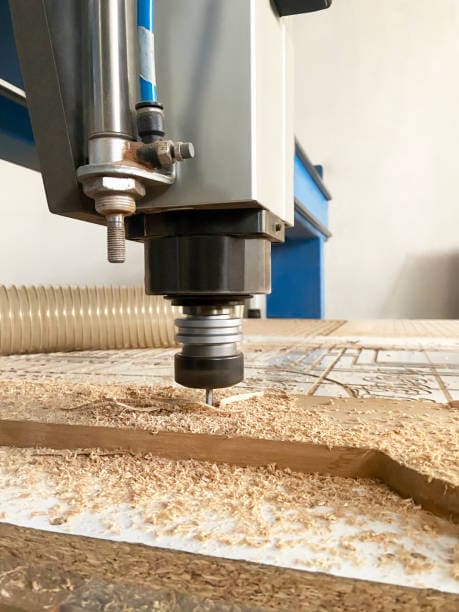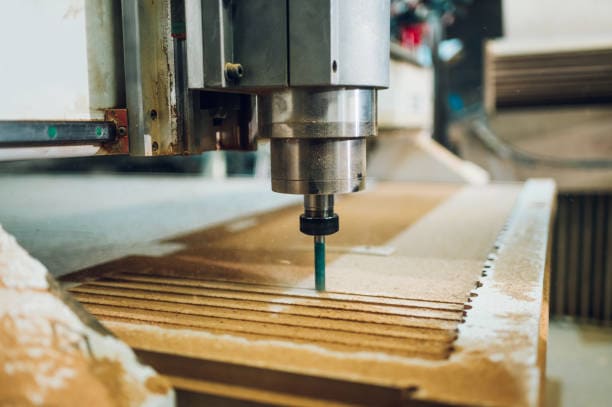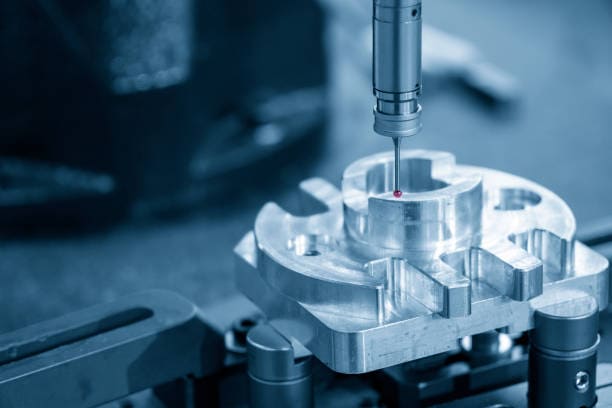Introduction
CNC milling centers have revolutionized the manufacturing industry by offering high precision and speed in machining tasks. At the heart of these centers lies the spindle, a crucial component that ensures high-speed operation and precise angular positioning. For processes such as milling flats, where accuracy is paramount, understanding how a CNC spindle achieves both high speed and precision is essential. This article will dive into the technical details of CNC spindles, explaining the factors that contribute to their performance and why this topic is vital for anyone involved in advanced machining.
Understanding CNC Milling Center Spindles
The spindle in a CNC milling center plays a dual role: it drives the cutting tool at high speeds and maintains angular accuracy to ensure precise cuts. Achieving these dual objectives requires a well-designed spindle system capable of maintaining stability, speed, and precision. A CNC spindle typically consists of a motor, bearings, a cooling system, and a feedback mechanism for position control.
The Role of Spindles in CNC Milling Centers
Spindles are critical in CNC milling centers as they determine the machine’s ability to perform high-precision tasks. Whether it’s cutting metal or creating intricate patterns, the spindle must operate with great speed and accuracy. The spindle motor powers the rotation, while feedback systems ensure that it stays on the correct path to achieve the desired results.
Key Components of a CNC Spindle for Precision Milling
A CNC spindle includes several key components, such as the spindle motor, cooling mechanisms, and feedback control systems. Each of these plays a vital role in ensuring both high-speed performance and angular positioning accuracy. The spindle motor drives the rotation, while precision bearings reduce friction and vibrations during operation. The cooling system prevents overheating, which can degrade performance and feedback control systems ensure that the spindle maintains precise angular positioning.

Achieving High Speed in CNC Milling
Speed is a critical factor in CNC milling, as faster spindles can increase productivity and reduce cycle times. However, achieving high speeds without sacrificing accuracy requires a careful balance of motor power, bearing technology, and thermal management. Modern CNC milling centers use advanced spindle motors, designed to operate at high RPMs, while maintaining torque and minimizing heat generation.
The Importance of Spindle Speed for Efficient Milling
The spindle speed directly impacts the efficiency of the milling process. Higher speeds allow for faster cutting and reduced machining times. However, it’s essential to match spindle speed with the material and tooling being used to avoid issues such as tool wear or poor surface finishes. In CNC milling, maintaining optimal speed while ensuring precise cutting is key to producing high-quality parts.
Technologies Behind High-Speed Spindle Operations
Advanced technologies like direct-drive motors, ceramic bearings, and active cooling systems enable CNC spindles to operate at extremely high speeds. Direct-drive motors eliminate the need for gears or belts, reducing energy loss and providing smoother operation. Ceramic bearings, which are lighter and generate less heat than metal bearings, further enhance high-speed performance. Additionally, cooling systems, such as liquid or air cooling, help dissipate heat, ensuring that the spindle remains at an optimal temperature during operation.
Ensuring Angular Positioning Accuracy
While high speed is important, angular positioning accuracy is equally critical, especially when machining flats or other precise geometries. The ability to maintain exact positioning allows CNC machines to produce consistent, high-quality parts. Factors such as the spindle’s rigidity, feedback control, and thermal stability all contribute to maintaining angular accuracy during high-speed operations.
Techniques for Maintaining Precision in Angular Positioning
Angular positioning accuracy is achieved through a combination of mechanical precision and advanced control systems. Feedback mechanisms, such as encoders or resolvers, continuously monitor the spindle’s position and provide real-time adjustments to ensure accuracy. Precision bearings and rigid spindle housings also help reduce unwanted movement or vibrations, which could impact positioning accuracy.
The Impact of Spindle Design on Accuracy
Spindle design plays a significant role in determining angular positioning accuracy. A well-designed spindle minimizes deflection and vibrations, ensuring that the cutting tool stays precisely aligned with the workpiece. Innovations in spindle materials, such as the use of lightweight composites and advanced alloys, have further improved the ability of CNC spindles to maintain accuracy during high-speed operations.
Innovations in Spindle Technology
CNC spindle technology has seen significant advancements in recent years. Innovations such as hybrid spindle designs, multi-spindle systems, and advanced material usage have enhanced both speed and precision in CNC milling centers. These innovations have enabled manufacturers to produce more complex parts with tighter tolerances, while also increasing overall productivity.
Recent Advances in Spindle Design and Materials
Recent advances in spindle design include the use of hybrid spindles, which combine high-speed capabilities with improved angular positioning accuracy. Additionally, new materials like carbon fiber composites are being used in spindle construction to reduce weight, enhance rigidity, and improve thermal stability. These advances allow CNC milling centers to achieve higher speeds and better accuracy, even in demanding applications.
Case Studies: Success Stories of Improved Milling Performance
Several manufacturers have reported significant improvements in milling performance after upgrading to advanced CNC spindles. For example, one company reported a 30% increase in productivity after switching to a direct-drive spindle system, which provided better speed control and reduced cycle times. Another company saw a dramatic improvement in part quality after implementing ceramic bearings, which reduced vibration and enhanced angular positioning accuracy.

Conclusion
CNC milling center spindles are essential for achieving high-speed operation and maintaining angular positioning accuracy. Through a combination of advanced motor technology, precision bearings, and feedback control systems, modern spindles can perform even the most demanding machining tasks with exceptional precision. Understanding the importance of spindle speed and accuracy allows manufacturers to improve productivity, reduce cycle times, and enhance the quality of their products.
FAQ
- What Makes a Spindle Achieve High Speed? High-speed spindle performance is achieved through direct-drive motors, ceramic bearings, and efficient cooling systems that minimize friction and heat.
- How Do CNC Spindles Maintain Angular Positioning Accuracy? CNC spindles maintain angular accuracy through feedback control systems that monitor and adjust spindle position in real-time, ensuring precise cuts.
- Can Spindle Speed Affect the Quality of Milling Flats? Yes, spindle speed directly impacts the quality of milling flats. Excessive speeds can lead to tool wear, while too slow speeds may result in poor surface finishes.
- What Are the Signs of a Failing CNC Milling Center Spindle? Signs of spindle failure include increased vibration, overheating, unusual noise, and reduced accuracy or speed during operations.
- How Often Should CNC Spindle Maintenance Be Performed? CNC spindles should undergo regular maintenance, typically every 6-12 months, depending on usage intensity and environmental conditions.
Key Takeaways
- High-speed CNC milling requires advanced spindle technology, including direct-drive motors and ceramic bearings.
- Angular positioning accuracy is critical for precision milling tasks and can be maintained through robust feedback control systems.
- Innovations in spindle materials, such as carbon fiber and advanced alloys, enhance both speed and accuracy in modern CNC spindles.
- Regular spindle maintenance is essential to prevent failure and ensure long-term performance.

- RicoCNC has a team of professionals who have been engaged in the design, production, sales, and maintenance of electro spindles for many years. Our company accepts the purchase of various types of
water-cooled CNC spindle motors
Edge banding machine spindle motors.
- If you need any CNC spindle, please contact us.

